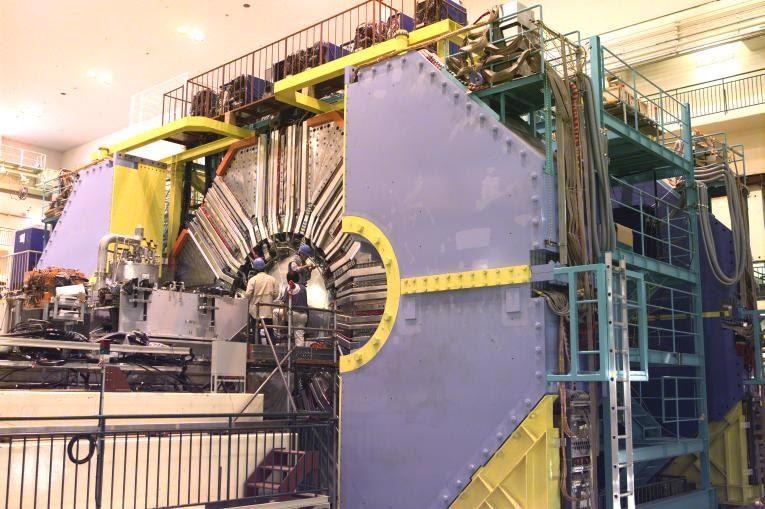Reviewed by Alex SmithSep 22 2021
For the first time, researchers were able to quantify the energy dependence of e+e− → B-anti-B, B-anti-B* and B*-anti-B* reactions in the 10.63 GeV to 11.02 GeV energy range. This was done as a part of the Belle experiment. The new data will support the nature of the group of Upsilon mesons that possess mass in this range.
 The Belle detector. Image Credit: www.kek.jp.
The Belle detector. Image Credit: www.kek.jp.
The study findings were published in the Journal of High Energy Physics. More than 400 researchers participated in the Belle experiment, including the staff members of the HSE International Laboratory of Elementary Particle Physics.
Scientists identified the anomalous characteristics of high-energy Upsilon meson states in 2008. The reason for these unexpected characteristics remains a puzzle in hadron physics. Theoretical studies affirm that there are more degrees of freedom within these states, such as a pair consisting of a lightweight quark and an anti-quark, or a valent gluon.
These kinds of multi-particle bound states are known as “exotic hadrons,” and until recently, they were not discovered. More experimental data was required to differentiate several models of highly excited Upsilon meson structure. The information was collated during the belle experiment in 2020 and serves as the basis for the study.
The Belle detector was situated at the collision point of KEK-B, an electron-positron collider in Japan, possessing total beam energy close to 10 GeV. The detector collected data from 1999 to 2010. The main goal of the experiment was to understand the characteristics of B+ and B0 mesons, comprising heavy anti-b-quark and one light u- or d-quark.
Several rare decays of the particles were detected, and the variations in the properties of the particles and anti-particles (B+ and B-, B0 and anti-B0) were analyzed to expose the mechanism behind the matter/anti-matter asymmetry of the contemporary universe.
A collision between an electron and a positron generates several particles, which in turn interact or decay. Modern experiments hold several layers of various detectors to learn the reactions that occur after a particle collision.
The Belle experiment utilized a silicon detector to quantify the interaction point, a drift chamber to trace the charged particles and a cesium iodide-based counter for the photons.
The cross-section energy dependence for various reactions was calculated using the data scan. For instance, a new heavy Upsilon (10750) meson was noticed in the cross-section of weakly excited Upsilon mesons, generated together with a pair of pi+ and pi− mesons.
Until recently, only the reactions that form a relatively small contribution to a total cross-section were researched. Lastly, the cross-sections e+e− → B-anti-B, B-anti-B*, and B*-anti-B* were measured and these make the largest contribution to the total cross-section.
This provided the researchers with the first complete set of data on exotic Upsilon mesons, which enabled various theoretical teams to start working to elucidate the measurements.
Journal Reference:
Mizuk, R., et al. (2021) Measurement of the energy dependence of the e+e− → BB¯, BB¯∗ and B∗B¯∗ exclusive cross sections. Journal of High Energy Physics. doi.org/10.1007/JHEP06(2021)137.